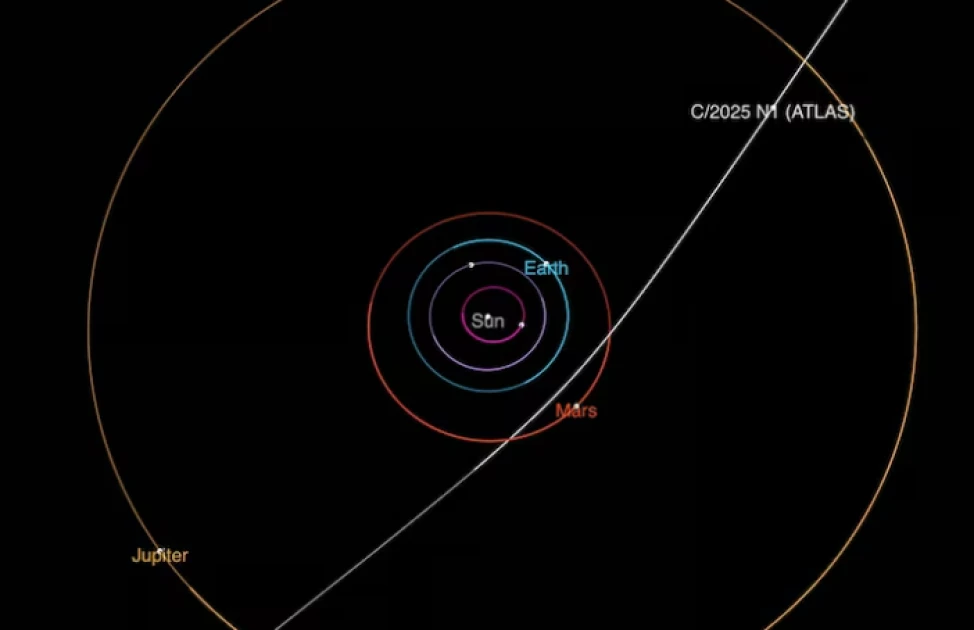Newly spotted comet is third interstellar object seen in our solar system

This undated diagram shows the trajectory of the interstellar comet 3I/ATLAS as it passes through the solar system, released by NASA on July 2, 2025. NASA/JPL-Caltech THIS IMAGE HAS BEEN SUPPLIED BY A THIRD PARTY

Audio By Vocalize
Astronomers are tracking a newly spotted comet hailing from
parts unknown, only the third time such an interstellar object has been
observed visiting our solar system.
According to U.S. space agency NASA, the interloper - named
3I/ATLAS - was first spotted on Tuesday by an Asteroid Terrestrial-impact Last
Alert System, or ATLAS, telescope located in Rio Hurtado, Chile. Astronomers
said its unusual trajectory indicated it had ventured from beyond our solar
system.
Journeying at a speed of around 37 miles (60 km) per second
from the direction of the center of the Milky Way galaxy, 3I/ATLAS is presently
located about 420 million miles (670 million kilometers) from Earth.
"Beyond that we do not know very much, and there are
many efforts underway to observe this object with larger telescopes to
determine composition," University of Hawaii astronomer Larry Denneau,
co-principal investigator for ATLAS, said on Thursday.
The only other such interstellar visitors previously
observed by astronomers were objects called 1I/'Oumuamua (pronounced
oh-MOO-uh-MOO-uh), detected in 2017, and 2I/Borisov, discovered in 2019.
"The comet has some similarities to 2I/Borisov in that
it appears to be an icy comet, but it is much larger, possibly 10 km (6.2
miles) in diameter," Denneau said.
"It currently has a faint coma," Denneau added,
referring to the cloud of gas and dust surrounding a comet's nucleus, "but
the coma and tail may increase dramatically as the object comes closer to the
sun. Its closest approach to the sun will be later this year, when it will come
inside the orbit of Mars. We don't know what will happen, so that's exciting."
Astronomers said the comet poses no threat to Earth and will
never come closer than 150 million miles (240 million km) away, equivalent to
more than 1-1/2 times the distance between Earth and the sun. It is currently
located about 416 million miles (670 million km) from the sun and will reach
its closest approach to the sun around October 30, when it will be about 130
million miles (210 million km) away from our star.
The ATLAS network is a NASA-funded telescope survey built
and operated by the University of Hawaii, with five telescopes around the world
that scan the night sky continuously to look for objects that could threaten
Earth.


Leave a Comment